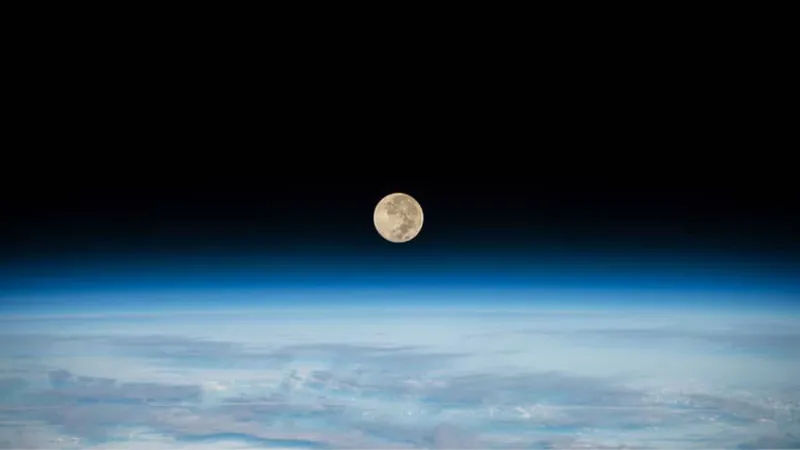
Earth’s Incredible Dance With Mini-Moons: A Journey Through Time
2024-10-05
In a surprising cosmic event, Earth has officially captured a new mini-moon, formally recognized as asteroid 2024 PT5. This captivating moment occurred on Sunday, September 29, marking our planet's latest brush with an asteroid that has reinforced the fascinating notion that we’ve had two moons orbiting us in the past.
Discovered on August 7 by the Asteroid Terrestrial-Impact Last Alert System (ATLAS), researchers Carlos and Raúl de la Fuente Marcos from Spain’s Universidad Complutense de Madrid were the first to identify 2024 PT5. Their groundbreaking findings have been published in Research Notes of the American Astronomical Society, solidifying this event in scientific history.
This isn’t a first for Earth, as our planet has previously welcomed mini-moons. The inaugural documented visit happened in 1981 with a cosmic body known as 2022 NX1, which was temporarily captured by Earth's gravity. This mini-moon graced us with its presence again in 2022 and is expected to return in 2051. Another fleeting visitor was 1991 VG, which was briefly caught in Earth’s embrace in February 1992 but never completed an entire orbit.
In a remarkable feat, asteroid 2006 RH120 stayed with Earth for a whole year after being captured in July 2006, remaining bound by our planet's gravity until July 2007. Another notable mini-moon, 2020 CD3, lingered for several years before it exited Earth's orbit in May 2020.
As for our newest cosmic companion, asteroid 2024 PT5, it is believed to be rather diminutive—estimated at only 37 feet in diameter, compared to the Moon’s massive 2,159 miles. This mini-moon is expected to remain with us only for a brief period, flying away on November 25, without completing a full orbit.
2024 PT5, residing in the Arjuna asteroid belt—home to other space rocks with similar orbital paths to Earth—has intrigued astronomers with its potential close approaches, coming as near as 2.8 million miles. Unfortunately, due to its small size and dimness, it’s nearly impossible for amateur astronomers to view it with standard telescopes.
The science behind these mini-moons sparks a deeper interest in understanding our solar system's dynamic nature. The gravitational interplay between Earth and these asteroids provides invaluable insights into celestial mechanics and the history of our planet’s relationship with other cosmic bodies.
So, keep your eyes on the sky! Our next mini-moon adventure is just around the corner and could unlock more secrets of the universe. Are we witnessing the beginning of a new era in astrological research? Stay tuned!




 Brasil (PT)
Brasil (PT)
 Canada (EN)
Canada (EN)
 Chile (ES)
Chile (ES)
 España (ES)
España (ES)
 France (FR)
France (FR)
 Hong Kong (EN)
Hong Kong (EN)
 Italia (IT)
Italia (IT)
 日本 (JA)
日本 (JA)
 Magyarország (HU)
Magyarország (HU)
 Norge (NO)
Norge (NO)
 Polska (PL)
Polska (PL)
 Schweiz (DE)
Schweiz (DE)
 Singapore (EN)
Singapore (EN)
 Sverige (SV)
Sverige (SV)
 Suomi (FI)
Suomi (FI)
 Türkiye (TR)
Türkiye (TR)